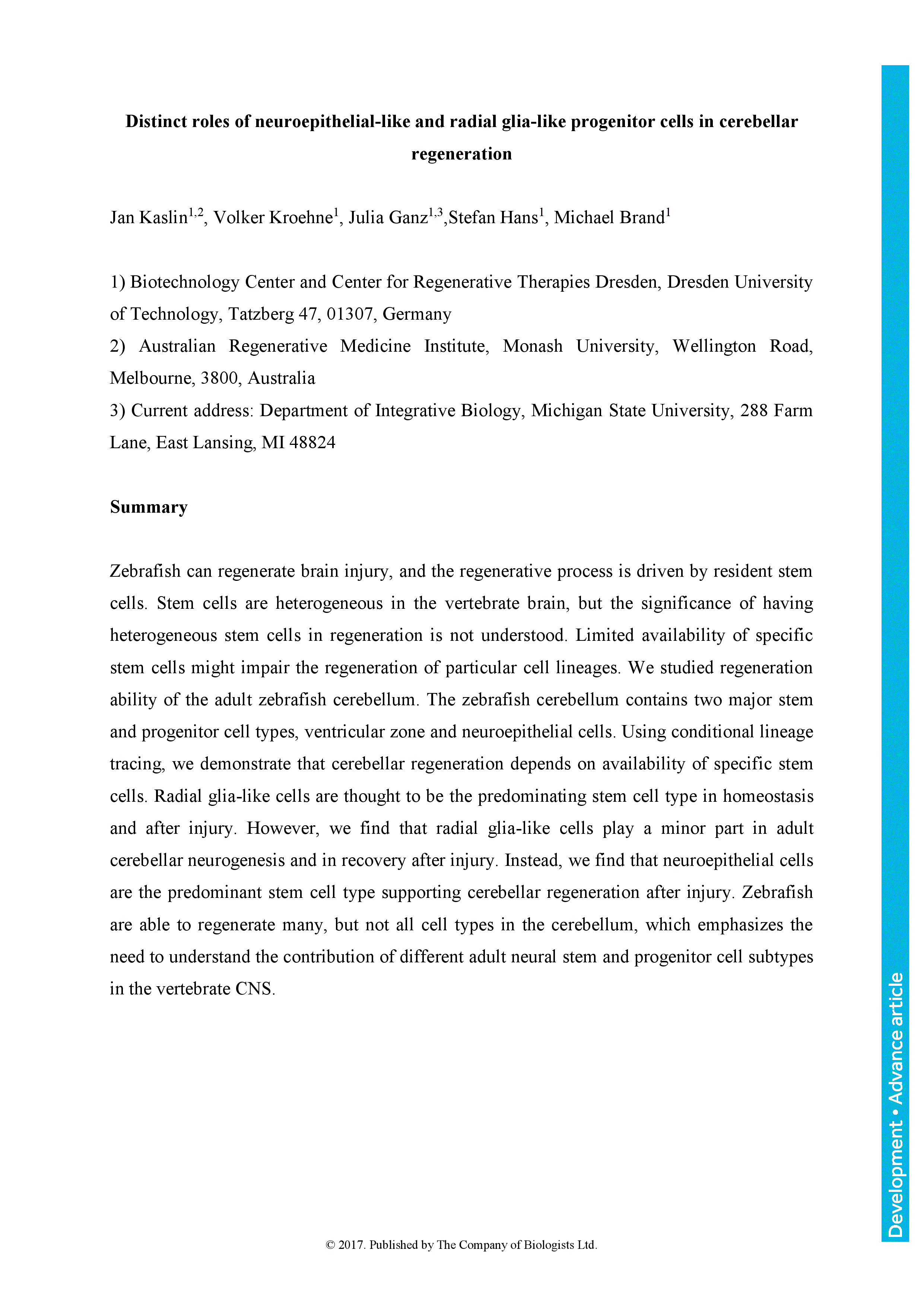Zebrafish can regenerate brain injury, and the regenerative process is driven by resident stem cells. Stem cells are heterogeneous in the vertebrate brain, but the significance of having heterogeneous stem cells in regeneration is not understood. Limited availability of specific stem cells might impair the regeneration of particular cell lineages. We studied regeneration ability of the adult zebrafish cerebellum. The zebrafish cerebellum contains two major stem and progenitor cell types, ventricular zone and neuroepithelial cells. Using conditional lineage tracing, we demonstrate that cerebellar regeneration depends on availability of specific stem cells. Radial glia-like cells are thought to be the predominating stem cell type in homeostasis and after injury. However, we find that radial glia-like cells play a minor part in adult cerebellar neurogenesis and in recovery after injury. Instead, we find that neuroepithelial cells are the predominant stem cell type supporting cerebellar regeneration after injury. Zebrafish are able to regenerate many, but not all cell types in the cerebellum, which emphasizes the need to understand the contribution of different adult neural stem and progenitor cell subtypes in the vertebrate CNS.
Distinct roles of neuroepithelial-like and radial glia-like progenitor cells in cerebellar regeneration
Current address: Department of Integrative Biology, Michigan State University, 288 Farm Lane, East Lansing, MI 48824
Currently Viewing Accepted Manuscript - Newer Version Available
Jan Kaslin, Volker Kroehne, Julia Ganz, Stefan Hans, Michael Brand; Distinct roles of neuroepithelial-like and radial glia-like progenitor cells in cerebellar regeneration. Development 2017; dev.144907. doi: https://doi.org/10.1242/dev.144907
Download citation file:
Advertisement
Call for papers: Uncovering Developmental Diversity

Development invites you to submit your latest research to our upcoming special issue: Uncovering Developmental Diversity. This issue will be coordinated by our academic Editor Cassandra Extavour (Harvard University, USA) alongside two Guest Editors: Liam Dolan (Gregor Mendel Institute of Molecular Plant Biology, Austria) and Karen Sears (University of California Los Angeles, USA).
Choose Development in 2024

In this Editorial, Development Editor-in-Chief James Briscoe and Executive Editor Katherine Brown explain how you support your community by publishing in Development and how the journal champions serious science, community connections and progressive publishing.
Journal Meeting: From Stem Cells to Human Development

Register now for the 2024 Development Journal Meeting From Stem Cells to Human Development. Early-bird registration deadline: 3 May. Abstract submission deadline: 21 June.
Pluripotency of a founding field: rebranding developmental biology

This collaborative Perspective, the result of a workshop held in 2023, proposes a set of community actions to increase the visibility of the developmental biology field. The authors make recommendations for new funding streams, frameworks for collaborations and mechanisms by which members of the community can promote themselves and their research.
Read & Publish Open Access publishing: what authors say

We have had great feedback from authors who have benefitted from our Read & Publish agreement with their institution and have been able to publish Open Access with us without paying an APC. Read what they had to say.



